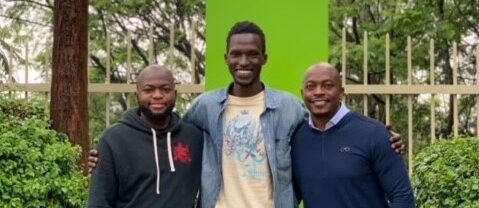Interview
Black Rhino

Brian Afande, you are the Managing Director of Black Rhino. What is Black Rhino and what is the idea behind it?
Brian Afande: The idea behind it is what we call an Extended Reality Agency. We are specialized in creating AR and VR contents and solutions for different companies and organizations. But the real essence of Black Rhino is to do what we call the Three D. The first D is to democratize technology, make it accessible and affordable for the people especially in a difficult African context.
The second D is to demystify technology, because we know that there is technology anxiety and people do not trust technology
The third D is deployment. None of this can work without infrastructure so the deployment is about building soft and hard infrastructures that will actually pave way into mass adoption for the technology in Africa.
We do this in the form of public and private partnerships trying to really be ahead of how we can start building an ecosystem that supports technology from an infrastructure perspective.
Steven Kimani, you are introduced as the technician of Black Rhino. Where do you see the potential of VR and AR in the future?
Steven Kimani: XR in general is not an independent body. And I think that is the future: Like looking at things from different perspectives. Some application that currently exist are using the technology of phones, for example the navigation feature. Having an actual guide in your real world will really help when we look at it in different sector for example in hospitals. Training doctors through VR which is risk free which means, they will not experiment with the patients but rather experimented with the technology. It has immense potential and I think with time technology will definitely improve and be more accessible and democratized to everyone.
Nelson Ijakaa, you are a Nairobi-based artist that has worked for Black Rhino in the context of the State of the Arts Project at the Goethe-Institut Nairobi. Having a background in photography and painting, how does VR come into your practice?
Nelson Ijakaa: I wouldn't only call it VR but extended realities. I wanted to take my practice into multimedia and take advantage of the fact that people are moving with technology. What is really attractive for me is to create within the space of the extended reality a narrative aspect. Instead of putting an artistic statement someone can see what the usually have a distance to. You can augment the extra content in whichever way you want and emphasize with the reality on top of it. You can throw people almost “into your brain” because of the third dimension of reality. People go into your “mind” and see exactly what it was that you are trying to say.